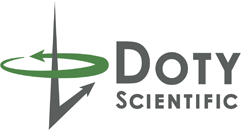03
Jul
Important Facts When Purchasing a Solids Probe
posted by : Doty Scientific | category : NMR Products | comments : Comments Off on Important Facts When Purchasing a Solids Probe
Important Facts When Purchasing a Solids Probe
|
| Did You Know…
Standard NB VT range: -80 oC to + 120 oC Extended NB VT range: -150 oC to + 150 oC Low Extended NB VT range: -170 oC to + 150 oC
|

